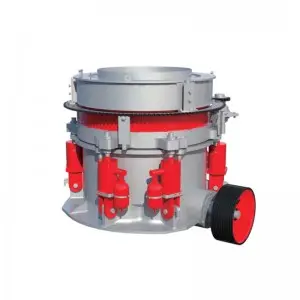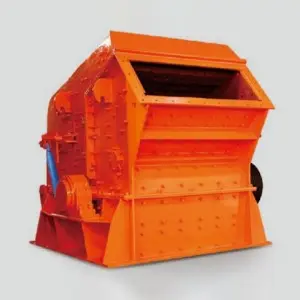The focus of global infrastructure construction is gradually shifting from traditional developed regions to emerging markets, among which Southeast Asia and the African continent are experiencing an unprecedented construction boom. This large-scale infrastructure expansion not only drove a sharp increase in the demand for construction machinery, but also gave rise to a continuous demand for equipment maintenance and spare parts replacement. For crushing equipment, in tropical climates and high-intensity operation environments, the quality and supply efficiency of spare parts directly determine the progress and cost control of engineering projects.
First, the driving factors and current development status of the infrastructure boom in emerging markets
The infrastructure boom in Southeast Asia and Africa is not accidental but the result of multiple factors working together. From a macroeconomic perspective, population growth, the acceleration of urbanization and regional economic integration have become the three core driving forces.
In Southeast Asia, the urbanization rates in countries such as Indonesia, Vietnam, and the Philippines are growing at an annual rate of 1.5% to 2%. It is projected that by 2030, the urban population in ASEAN countries will exceed 300 million. This demographic change has directly given rise to an urgent demand for housing, transportation and public facilities. Take the new capital construction project in Indonesia as an example. In the initial stage alone, over 160 million tons of earthwork and stonework need to be processed, which poses extremely high requirements for the continuous operation of crushing equipment.
The African continent shows the characteristics of regional coordinated development. The “African Continental Free Trade Area” initiative promoted by the African Union has prompted countries such as Kenya and Ethiopia to increase their investment in cross-border railway and port facilities. Data shows that in 2023, Africa’s total infrastructure investment exceeded 80 billion US dollars, with mining and energy projects accounting for 42%. These projects generally require high-intensity crushing operations for support.
It is worth noting that infrastructure projects in emerging markets exhibit distinct characteristics of “high intensity and long cycle”. Under tropical climate conditions, the average operating temperature of equipment is 15-20℃ higher than that in temperate regions. Coupled with the working environment with a relatively high dust concentration, the wear rate of key components of the crushing equipment increases by more than 30%. This special working condition directly amplifies the demand for high-quality spare parts.
Second, the structural characteristics of the demand for spare parts of crushing equipment
In the Southeast Asian and African markets, the demand for spare parts of crushing equipment exhibits distinct structural characteristics, which are not only attributed to the local geological conditions but also closely related to the type of engineering.
From the perspective of geological conditions, Southeast Asia is mostly a distribution area of basalt and granite, and the compressive strength of the rocks is generally between 180 and 250MPa. In sub-Saharan Africa, sedimentary rocks are dominant, accompanied by a large number of iron ore and copper mining projects, and the hardness of the materials fluctuates greatly. This difference leads to a significant distinction in the focus of spare parts demand across different regions: the Southeast Asian market has higher requirements for the wear resistance of jaw plates and conical crushing walls, while African mining projects pay more attention to the impact resistance performance of impact plates and liners.
From the perspective of equipment types, the proportion of small and medium-sized mobile crushing stations in emerging markets has been increasing year by year, rising from 38% in 2018 to 57% in 2023. The spare parts demand for this type of equipment is characterized by “a wide variety and high replacement frequency”, especially the replacement cycle of hydraulic system components and transmission parts is 20% to 25% shorter than that of fixed equipment.
The differences in maintenance modes also affect the structure of spare parts demand. Emerging markets generally adopt a mixed model of “preventive maintenance + emergency replacement”, which keeps the reserve ratio of vulnerable parts to key components at around 6:4. Data shows that in 2023, the import value of spare parts for crushing equipment in Southeast Asia increased by 27% year-on-year. Among them, wear-resistant material spare parts accounted for 53%, and hydraulic components accounted for 21%, forming a relatively stable demand structure.


Third, Challenges and Solutions in spare parts Supply
Despite strong demand, the supply of spare parts for crushing equipment in emerging markets still faces multiple challenges, which stem not only from the logistics system but are also closely related to the local operating environment.
The timeliness of logistics is the most prominent issue. The average transportation cycle for spare parts in Southeast Asian island countries is 14 to 21 days, while in landlocked African countries, it can be as long as 30 to 45 days. This long cycle directly leads to an increase in equipment downtime. According to estimates, for each day of delay in replacing key spare parts, the average loss of the engineering project can reach 0.8% to 1.2% of the original value of the equipment.
Climatic factors impose special requirements on the storage of spare parts. In tropical coastal areas where humidity exceeds 85%, the rusting rate of metal parts is three times that of temperate regions. This requires that spare parts undergo special anti-rust treatment during storage, and the packaging must have moisture-proof and breathable performance. These additional measures will increase the supply cost by 15% to 20%.
In response to these challenges, the industry is developing multi-level solutions. The regional distribution center model is gradually emerging. Spare parts hubs established in places like Bangkok, Thailand and Johannesburg, South Africa can shorten the delivery cycle to neighboring countries to within 72 hours. The application of digital inventory management systems has also significantly enhanced supply efficiency. The prediction of spare parts consumption achieved through Internet of Things technology can increase inventory turnover rate by more than 30%.
The improvement of the technical support system is equally crucial. Maintenance teams in emerging markets generally lack professional training, which leads to faults caused by improper installation of spare parts accounting for as high as 40%. Providing technical packages including installation guides and video tutorials has become an important means to enhance the effectiveness of spare parts usage.
Fourth, new trends in spare parts demand under the background of sustainable development
With the global emphasis on sustainable development, infrastructure projects in emerging markets are gradually introducing green standards, and this shift also poses new requirements for spare parts of crushing equipment.
The demand for energy-saving spare parts has risen significantly. In countries such as Vietnam and Kenya that have implemented carbon emission standards, wear-resistant parts made of high-strength low-alloy steel have seen their market share increase by 23% within two years due to their ability to reduce equipment energy consumption by 10% to 15%. Although the procurement cost of this type of material is relatively high, the total life cycle cost can be reduced by 22%, generating significant economic benefits.
The concept of circular economy has promoted the establishment of a spare parts recycling and utilization system. In South Africa, there have emerged professional enterprises specializing in the refurbishment of spare parts for crushing equipment. Through advanced surfacing technology, the service life of vulnerable parts such as jaw plates has been extended by more than 50%. This model not only reduces the spare parts expenditure of engineering projects, but also minimizes the environmental impact of metal waste.
The application of digital monitoring technology is changing the spare parts replacement mode. Intelligent spare parts equipped with sensors can transmit wear data in real time and predict replacement times through AI algorithms. The application of this predictive maintenance approach in large quarries in Southeast Asia has reduced unplanned downtime by 40%, significantly improving equipment utilization.
Fifth, the key elements for seizing opportunities in emerging markets
For spare parts suppliers who hope to participate in emerging markets, it is necessary to build core competitiveness from multiple dimensions to adapt to the complex and ever-changing market environment.
The ability to provide localized services is the top priority. In countries such as Indonesia and Nigeria, establishing service teams composed of local technicians can reduce the response time to faults to within 48 hours. At the same time, providing technical documentation in localized languages can increase the accuracy of spare parts installation by more than 60%, directly improving the customer experience.
Supply chain resilience building is equally important. In view of the unstable logistics characteristics of emerging markets, a two-level inventory model of “regional center + local warehouse” is adopted, which can not only ensure the timeliness of spare parts supply but also effectively control inventory costs. Data shows that this model can maintain the on-time rate of spare parts supply at over 90%, which is much higher than the industry average.
Product adaptability improvement is indispensable. Special treated spare parts such as high-temperature grease and anti-corrosion coatings developed for tropical climates have a 55% higher acceptance rate in the Southeast Asian market than standard products. This kind of product optimization based on the local environment has become a key breakthrough to open up emerging markets.
The infrastructure boom in emerging markets has brought unprecedented development opportunities to the spare parts industry of crushing equipment. Understanding the local demand characteristics, overcoming supply challenges, and grasping the green development trend will become the core elements for success in these dynamic markets. With the continuous advancement of infrastructure construction in Southeast Asia and Africa, the close cooperation between spare parts suppliers and project parties can not only realize commercial value but also contribute significantly to the sustainable development of these regions.
Post time: Oct-21-2025
